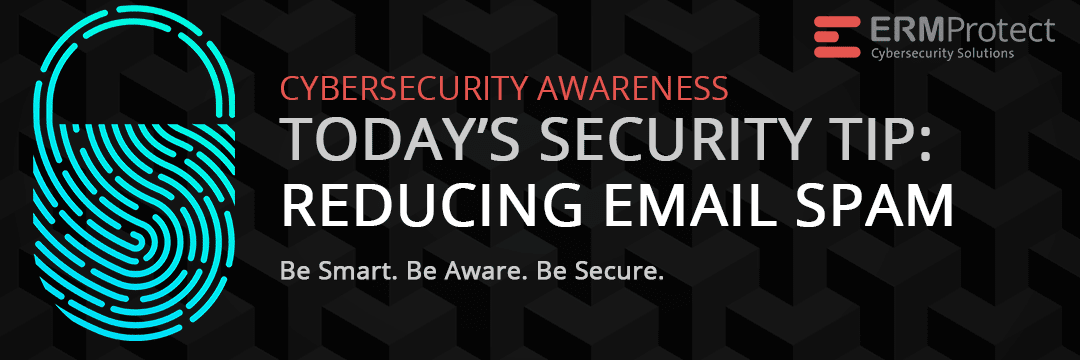Cyber Tip of the Day - How to Reduce Email Spam - Cybersecurity Awareness Training
You know Spam! Annoying e-mails that you never asked for but still land up in your inbox. Email spam has steadily grown over time and is a problem faced by almost all email users.
Here are some tips to reduce Email Spam:
- Never reply to spam. Avoid clicking on unsubscribe links in the e-mail. Instead, always report spam by using the “Report Spam” button. Over time, your e-mail server trains itself to prevent such e-mails.
- Don’t publish your e-mail address online. Automated bots are always scanning the Internet for new e-mail addresses that can be targeted with spam.
- When registering on online shopping sites or other sites, make sure you review all the boxes that are already checked or selected. One of these could be an automatic approval that the site can share your e-mail address with others.
- Avoid replying to unknown people or organizations. Even if it appears to be something for a good cause, like a cancer fund or a charity. Look up the organization online and reach out to them over the phone instead.
Be Smart. Be Aware. Be Secure. ERMProtect.

Get a curated briefing of the week's biggest cyber news every Friday.

Turn your employees into a human firewall with our innovative Security Awareness Training.
Our e-learning modules take the boring out of security training.
Intelligence and Insights

Aligning Your Incident Response Plan with NIST SP 800-61 Rev. 3
This article offers key updates in the latest NIST guidance, why they’re significant, and what practical steps you can take to update your organization’s incident response plan …

CEO Checklist: How To Know If Your Organization Is Cyber Secure
This CEO Checklist is a starting point for executive oversight – to spot gaps, test what your team is telling you, & prioritize where to invest attention/budget …

Guide to Penetration Testing and Advanced Techniques in Penetration Testing Services
Penetration testing is the interactive nature of the control evaluation. Unlike static assessments, penetration testing services involve dynamic interaction with the system …

